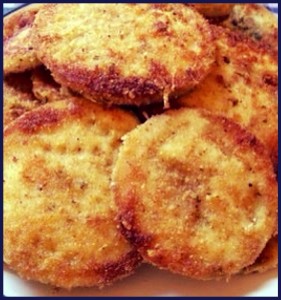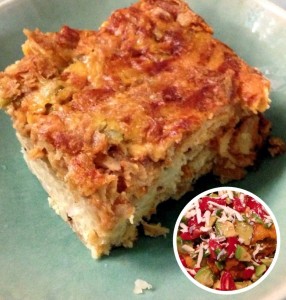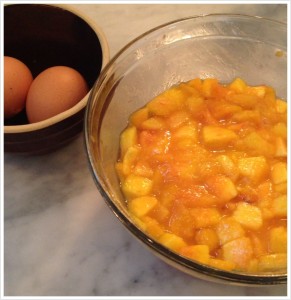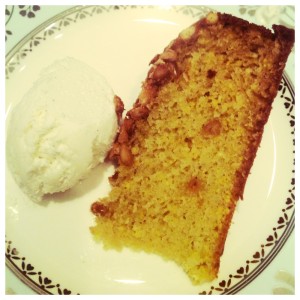 “Killer cobbler and perfectly seared steaks – two easy ways to create memorable dishes this summer in your cast iron skillet.”
“Killer cobbler and perfectly seared steaks – two easy ways to create memorable dishes this summer in your cast iron skillet.”
 This summer my cast iron skillet has become such a go-to tool that it seems to reside permanently upon by cook-top. In spite of its small cost – for many tasks it outperforms much more costly cabinet rivals – think Le Crueset and All Clad. The beauty of cast iron is that it distributes heat evenly and for charring you can get the surface white hot with no danger of ruining your food or the pan. It’s also highly versatile. In this post I hope to tackle two uses which are markedly distinct – Pan Searing Meat (achieving a great charred crust with out the hassle of heating up your grill) and Cooking Cobbler (using a wonderful heirloom recipe from Virginia Williis). But first let’s start with the pan. I prefer The Lodge 12″ Version – it is big enough for multiple steaks and deep enough to fry chicken. Lodge Skillets come factory seasoned – so upon purchase they are ready to go. Plus I love that all of the 100+ year old company’s products are made in their Tennessee foundry.
This summer my cast iron skillet has become such a go-to tool that it seems to reside permanently upon by cook-top. In spite of its small cost – for many tasks it outperforms much more costly cabinet rivals – think Le Crueset and All Clad. The beauty of cast iron is that it distributes heat evenly and for charring you can get the surface white hot with no danger of ruining your food or the pan. It’s also highly versatile. In this post I hope to tackle two uses which are markedly distinct – Pan Searing Meat (achieving a great charred crust with out the hassle of heating up your grill) and Cooking Cobbler (using a wonderful heirloom recipe from Virginia Williis). But first let’s start with the pan. I prefer The Lodge 12″ Version – it is big enough for multiple steaks and deep enough to fry chicken. Lodge Skillets come factory seasoned – so upon purchase they are ready to go. Plus I love that all of the 100+ year old company’s products are made in their Tennessee foundry.
Cast iron gets better with age – as the pan further “seasons” after each use. This helps build flavor and also create a non-stick surface. A key thing to remember is that these pans should never go in the dishwasher – in fact I prefer not to use soap when cleaning mine. I simply fill the pan with water – bring it back to a boil – use a plastic spatula to scrape away bits – and then rinse. You can also use kosher salt as an abrasive to help scrub away stubborn spots. After rinsing I return the pan to the stove to get hot again – this helps evaporate water and prevent rusting. And finally before putting my skillet away I rub the surface with just a tiny amount of vegetable oil.
Now onto the food . . .First up – how to use your skillet to perfectly sear meat
Flawless Pan Seared Ribeyes (or Burgers)
For dinner parties at The Richmond you will often see multiple skillets going simultaneously. I love to use this technique for ribeyes and it is also great burgers. First select your meat – remove it from the refrigerator and place it on a cutting board. Give it a very light coat of vegetable oil or lightly coat with a non-stick cooking spray like Pam. Season the meat generously on all sides with salt and pepper and let it return to room temperature. Meanwhile place your cast iron skillet over high heat for 15 to 20 minutes – or until the surface seems white hot. The pan should be so hot that it almost scares you. Place the meat on the skillet. For 1 1/2 ” ribeyes sear them untouched for 3 minutes and then turn them to sear for 3 minutes more on the other side. Use a timer, be strict and you will end up with a perfect medium rare steak with a warm red center. Obviously you can adjust the cooking time up or down for more rare or well done temperatures or for thinner/thicker cuts. For burgers form 1 1/2 inch patties and cook 2 1/2 minutes per side for medium rare. To add a more decadent flavor – melt a few tablespoons of butter in the pan after you have removed the meat and the pan has cooled very slightly (you still want it hot enough to brown the butter). Return the meat to the pan for a quick coat on both sides before serving.
And now for the cobbler . . . . I am a huge fan of Virginia Willis’ cookbook – Bon Appetit Y’all. It is a perennial best seller at our store – space519. A classically trained chef, Willis recounts heirloom recipes from her Southern Family and tweaks them slightly with modern techniques. What I love about her cobbler is its simplicity – one bowl for mixing and a skillet for baking and serving. The cast iron creates a perfectly browned crust. Plus the whole thing comes together in minutes. The final dish has a showstopping presentation and wonderful flavor. The ultimate summer comfort food. In her book she uses Blackberries – but I find any fresh fruit will do. It is especially good with fresh peaches. The recipe follows:










